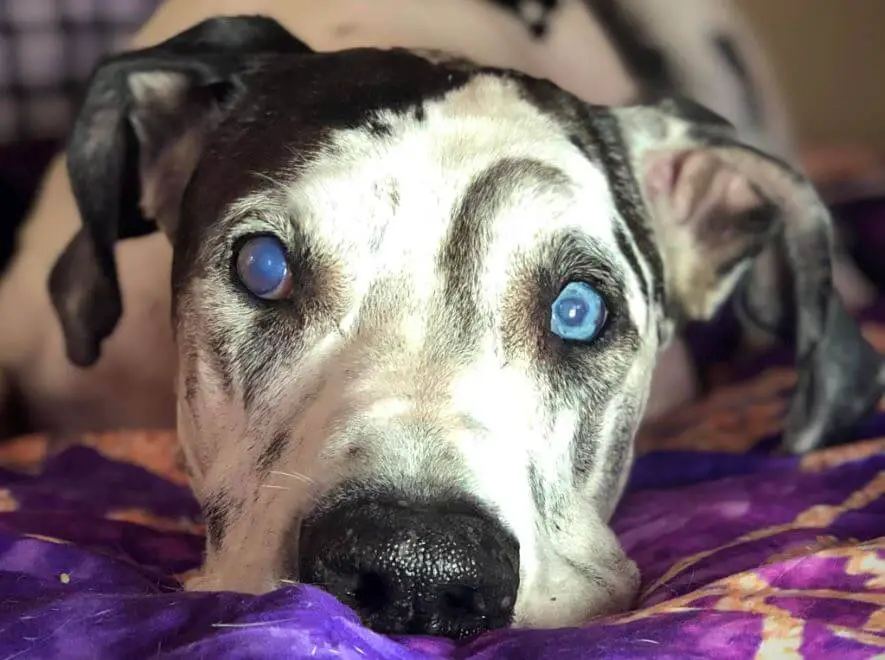Cloudy eyes in dogs can be a cause for concern for pet owners. Just like humans, dogs can experience changes in their eyes that may indicate underlying health issues. In this article, we will delve into the potential causes, symptoms, and important steps to take if you notice your canine companion developing cloudy eyes. Understanding these aspects will help you provide timely care and ensure the well-being of your beloved furry friend.

Cloudy Eyes in Dogs: What You Need to Know
Cloudy eyes refer to a condition where a dog’s eyes appear hazy or opaque instead of their usual clear and bright appearance. Several factors can contribute to cloudy eyes in dogs, including:
- Cataracts: Cataracts are a common cause of cloudy eyes in dogs. They result from the gradual clouding of the lens within the eye, leading to impaired vision. Cataracts can develop due to aging, genetic predisposition, or underlying medical conditions.
- Corneal Dystrophy: This genetic condition affects the cornea, the transparent outer layer of the eye. Cloudiness may occur as a result of fatty deposits, causing visual disturbances.
- Nuclear Sclerosis: Often mistaken for cataracts, nuclear sclerosis is a normal aging process in dogs where the lens becomes slightly cloudy. However, it typically doesn’t significantly impact vision.
- Infections and Inflammation: Eye infections or inflammatory conditions, such as uveitis, can lead to cloudy eyes. These conditions may be accompanied by redness, discharge, and squinting.
- Glaucoma: Cloudy eyes can also be a symptom of glaucoma, a condition characterized by increased pressure within the eye. Glaucoma can be painful and requires immediate veterinary attention.

Symptoms of Cloudy Eyes:
If your dog’s eyes appear cloudy, it’s important to watch for accompanying signs that may indicate an underlying issue:
- Changes in Behavior: Dogs with cloudy eyes may display changes in behavior, such as bumping into objects or hesitating in unfamiliar environments.
- Eye Discharge: Excessive tearing, discharge, or crusting around the eyes can be indicative of an eye infection or inflammation.
- Squinting or Rubbing: Dogs experiencing eye discomfort may squint, paw at their eyes, or rub their faces against surfaces.
- Vision Changes: Impaired vision or difficulty tracking moving objects may suggest a more serious eye condition.
When to Seek Veterinary Help:
Cloudy eyes should never be ignored, as they may signal a variety of health issues. If you notice any of the following signs, consult your veterinarian promptly:
- Sudden Cloudiness: If your dog’s eyes become cloudy suddenly or within a short period, it could be a sign of a serious condition that requires immediate attention.
- Discomfort or Pain: Any signs of discomfort, redness, squinting, or excessive tearing warrant a veterinary examination.
- Behavioral Changes: If your dog’s behavior changes, such as increased bumping into objects or reluctance to go outside, it may be related to vision problems.
- Gradual Changes: Even if the cloudiness develops gradually, it’s important to have your dog’s eyes checked by a veterinarian to rule out potential issues.

Cloudy eyes in dogs can be a concerning symptom, indicating various underlying health conditions that may affect your pet’s vision and overall well-being. Being vigilant and observant of your dog’s eye health is essential for early detection and timely treatment. If you notice any changes in your dog’s eyes, it’s recommended to consult a veterinarian to determine the cause and appropriate course of action. By providing the necessary care, you can help ensure that your furry companion enjoys a happy and healthy life with clear and bright eyes.
